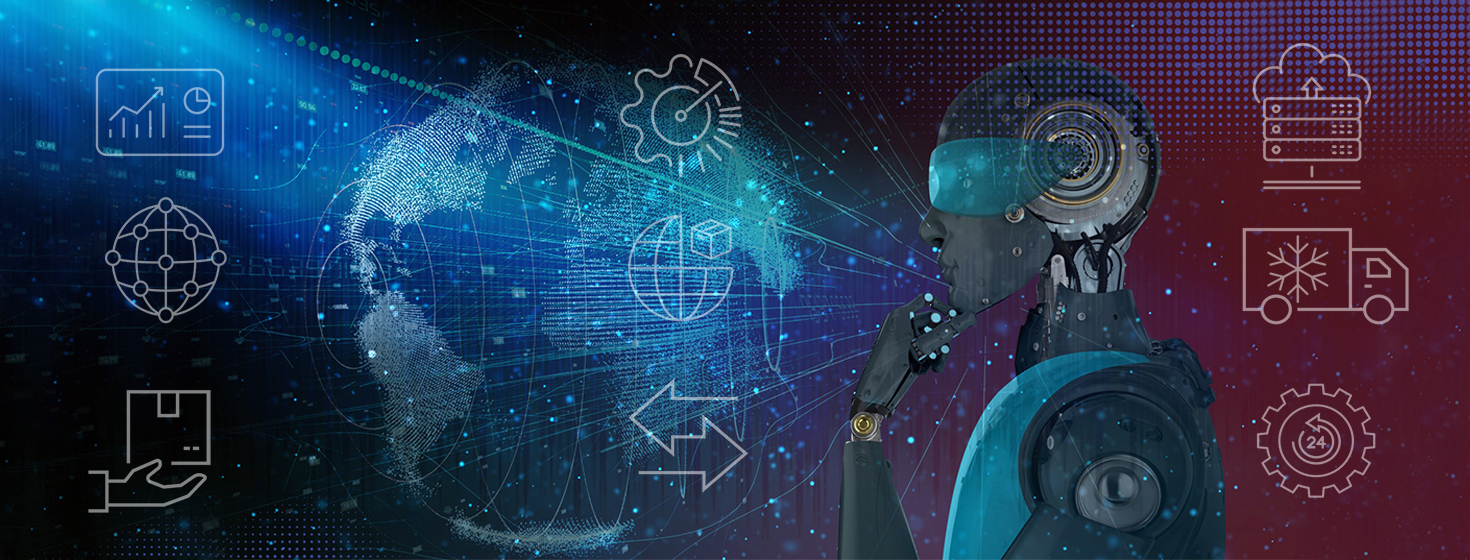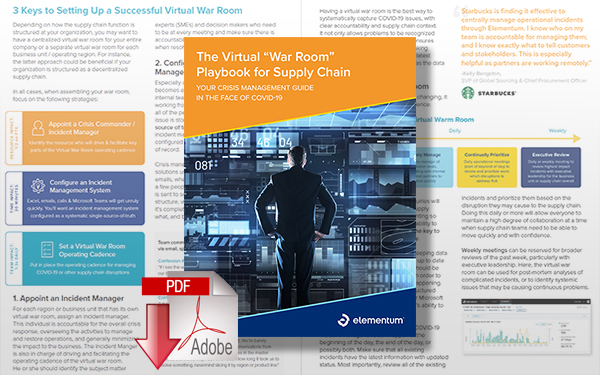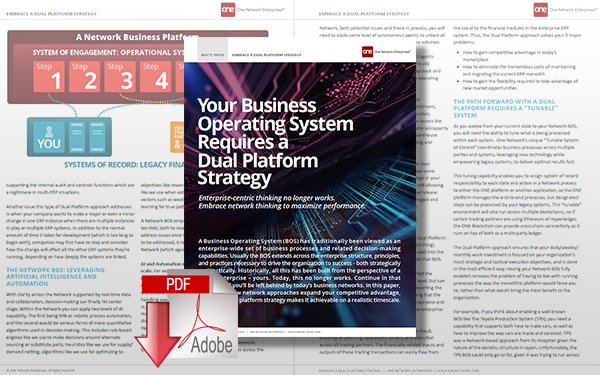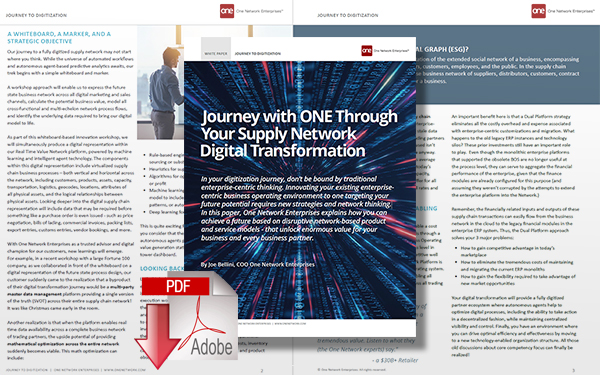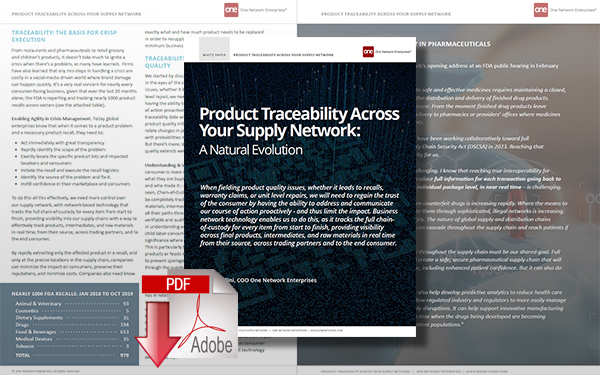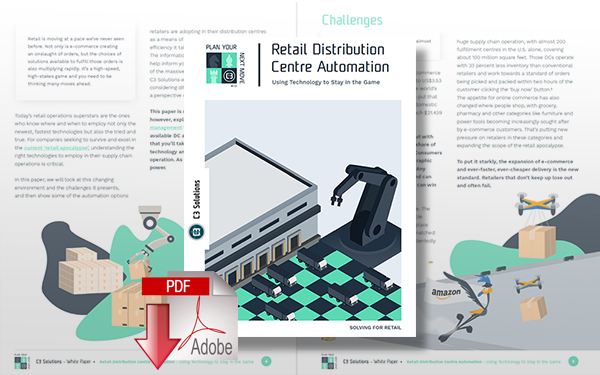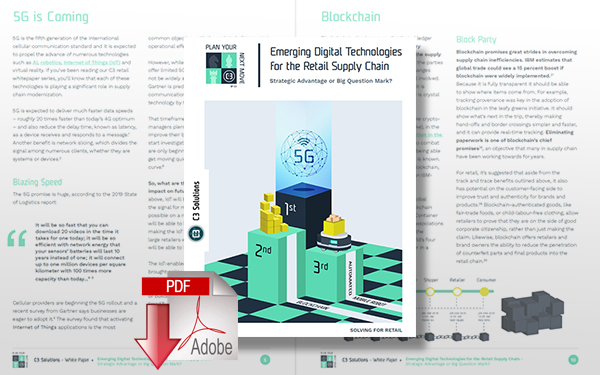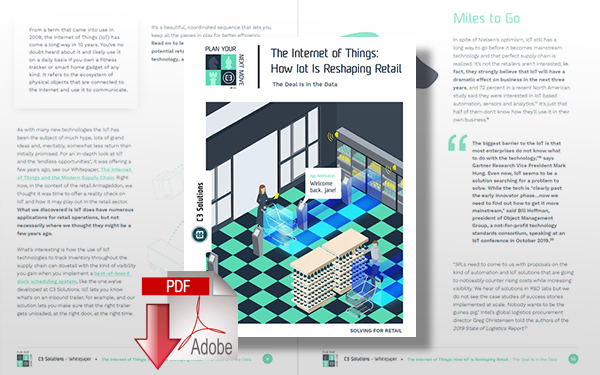Riding the Pandemic’s Wave of Change through Retail Supply Chain Innovation

During the pandemic, stay-at-home consumers switched to online buying, and the 2020 roll call of bricks-and-mortar bankruptcies reads like a “who’s who” of retailing, however, the pandemic has also unleashed a wave of unparalleled supply chain innovation.
A Wave of Supply Chain Innovation
COVID-19 has swelled the e-commerce tidal wave that was submerging traditional retailing before the virus struck.
During the pandemic, stay-at-home consumers switched to online buying in droves, and the 2020 roll call of bricks-and-mortar bankruptcies reads like a “Who’s Who” of retailing.
However, there is another side to this dramatic story. The pandemic has also unleashed a wave of innovation that is giving more impetus to the changes that are reshaping the retail business and its supporting supply chains.
As I describe in my new book, “The New (Ab)Normal: Reshaping Business and Supply Chain Strategy Beyond COVID-19,” the crisis is compressing innovation adoption cycles as retailers scramble to stay afloat in an ever-changing landscape.
These efforts offer vital clues to the shape of retailing in a post-pandemic world.
Navigating New Paths
During May and June 2020, the MIT Center for Transportation & Logistics conducted a survey of grocery shopping habits in the United States. The survey, part of a “Covid-19 Generational and Lifestyle Study,” elicited 1,320 responses.
The survey focused on buying behavior, distinguishing between store shopping and various online modes such as home delivery, curbside pickup, and locker pickup. Home delivery’s share of shopping increased from 13% to 31% of all buying trips. Of those individuals who shifted from in-store shopping to home delivery - the largest group to shift modes - 31% stated they were likely to continue with home delivery.
These findings provide a glimpse of the attitudinal changes that COVID-19 has caused; changes that impact every corner of the retail business. Retailers are responding with creative ways to migrate to online channels.
Shanghai, China-based Lin Qingxuan is a retailer with 300 outlets that sell cosmetics from traditional Chinese herbs. COVID-19 struck at the beginning of the Chinese New Year - a big shopping season for the retailer - shuttering 40% of its locations and causing a 90% drop in-store sales.
In response, the company quickly adapted its business model to digital sales channels. For example, it redeployed 100 of its in-store beauty advisors, who used tools such as WeChat, DingTalk, and Taobao Livestreaming for staging online events that engaged at-home customers. The change in direction worked. A Pre-Valentine’s Day online event yielded revenues 45% higher than the same event the previous year.
In the United States, retailers Savas and Sephora implemented similar changes. Nashville-based Savas sells made-to-measure leather jackets, a high-touch retail experience made impossible by the pandemic. The enterprise created a virtual-fitting package with a self-measuring kit, a packet of fabric swatches, and video consultations. Beauty product retailer Sephora created a Virtual Artist app and website that uses images of customers’ faces to let cosmetics shoppers try different products.
Another U.S.-based retailer, J. W. Lopes, repurposed its logistics network as part of a move to counter the pandemic’s threat. The company is a small New England fresh produce distributor. At the end of January 2020, Lopes had just built a processing center for pre-cut produce. The pandemic forced the company to rethink its future.
As people stayed at home in compliance with stay-at-home mandates, 75% of the company’s customers closed down, and those that remained ordered less product. Lopes deployed its logistics network it operates some 20 trucks - to sell directly to consumers. The initial concept was simple: sell $74.95 boxes of high-quality fresh produce using social media and email promotions as well as word of mouth. The enterprise subsequently added fish to the product mix and sourced from more local suppliers.
To execute the change, Lopes invested in more advanced inventory management, e-commerce capabilities, and routing technology. The plan worked; the new venture has enabled the distributor to rehire the staff it laid off when the coronavirus hit. Lopes is maintaining its original distribution business, and when the pandemic finally subsides is “going to build both businesses, work hard and see where it takes us,” said CEO Jeff Kotzen in an interview for the book.
Platforms for Innovation
In many respects, technology is proving to be a key enabler of pandemic-related directional changes in retailing. These advances were underway before COVID-19 upended the world, but picked up speed as the full implications of the crisis played out. A striking example is the rise of platforms.
Online platforms offer dynamic and flexible selling channels that are suited to volatile, less predictable environments. Consumers can search for a wide range of products, and that search data (along with data about consumers’ click activity) provides powerful, real-time visibility into demand, including demand for new products. This intelligence enables platform-based retailers to react swiftly to market changes.
Consider, for example, the experience of the online platform Etsy. When demand for face masks exploded owing to the pandemic, many consumers of a more stylish bent eschewed generic product such as Amazon’s “face mask, pack of 50.” Instead, they turned to Etsy to find handcrafted masks made by some of the platform’s 2.7 million artisans and sellers.
It took Etsy only a few hours to detect the shift in search behavior, and the enterprise adjusted its systems to reflect the change. It recruited face-mask makers, educating them on delivery expectations and allocated demand so that Etsy was not overly committed to a few sellers. In its May 2020 earnings call, Etsy reported that 60,000 shops were selling face masks with sales totaling 12 million units worth $133 million in April alone - at least 10% of the platform’s gross merchandise sales.
The Etsy experience points to another important benefit of the platform model: It enables independent retailers to compete with behemoths such as Amazon. The nimbleness and adaptability of platform sellers enable them to offer creative alternatives to consumers, and quickly capitalize on unexpected shifts in demand.
Another commerce platform, Shopify, reported a 71% rise in the number of new stores created on its platform in the second quarter of 2020 compared to the previous quarter, as consumers shifted to e-commerce. Shopify now has more than 1 million retailers on its platform.
Some retailers are proactively developing platform capabilities. For example, C&S Wholesale Grocers teamed up with Instacart to offer e-commerce and same-day delivery solutions to more than 3,000 C&S independent grocery retailers across the United States. C&S’s network of grocers will be brought into the Instacart marketplace where they will establish e-commerce and delivery offerings. Instacart shoppers will then be able to order products from the grocers and pick convenient order delivery times.
Moreover, platform-based selling opportunities are not confined to the products in high demand when a large-scale disruption occurs. It is notable that when Etsy enjoyed a surge in its face mask business, sales in non-mask categories also increased even though there was a slump in wedding and party-related products that had previously been big sellers.
Mobile as a Change Agent
Another technology that was a familiar feature of the retail landscape prior to the pandemic, and which is now helping companies to embrace e-commerce, is mobile communications.
A critical element of mobile platforms is synchronization: the ability to pre-arrange the availability of an item or resource. Customers gain visibility into the transaction as well as confidence in the process. Service providers gain visibility into real-time demand and can smooth their resource consumption. Here are two examples.
- Chipotle is bringing BOPIS (buy online, pickup-in-store) to burritos by expanding its Chipotlanes concept. With this system, consumers order their food via a mobile app and select a pickup time. They collect the order at the window, avoiding long lines. The lack of queuing also makes it easier for Chipotle to get permission for drive-through service from retail development owners who do not want the congestion of a traditional drive-through lane.
- Mobile technology is being used to improve the management of a scarce resource: urban parking space. Startups such as CurbFlow are working with cities to offer mobile apps that let delivery drivers and logistics companies schedule curbside loading and unloading activities. Allocating parking slots in this way streamlines urban logistics and the last-mile supply chain – an area that is attracting much attention because it is so critical to the efficiency of e-commerce.
Tech-Enabled Diversity Emerging
It’s impossible to know for sure what retailing will look like when the pandemic is behind us, but the outlines are taking shape.
Market leaders such as Amazon and Walmart will still be dominant. They have the resources and know-how to capture opportunities presented by the pandemic and to weather the storm.
However, COVID-19 also has catalyzed the creative destruction that was transforming retailing and could promote a more diverse industry. Many smaller enterprises have been goaded into action by the crisis, and are innovating their way into digital channels. Larger competitors are responding too.
For example, in May of this year, Facebook announced it will allow businesses to build virtual shops on its Facebook and Instagram platforms. To some extent, the announcement was timed to take advantage of difficulties Amazon was experiencing in meeting a surge in orders due to the pandemic.
Deborah Weinswig, CEO and Founder of Coresight, has suggested that it should be possible to shop an entire mall from one app. This vision encapsulates the pandemic-inspired changes that are transforming the retail business.
The Rebound Podcast: Welcome to the new (Ab)Normal
Related Article: Top Trends Accelerating Supply Chain Operations in 2021
Related Resources
The Virtual Supply Chain “War Room” Playbook
In this playbook, we examine one best practice that leading supply chain teams are turning to as they adjust to the wide-ranging impact of the next normal for the supply chain: a virtual war room. Download Now!
Your Business Operating System Requires a Dual Platform Strategy
In this paper, we explain how network approaches expand your competitive advantage, and how a dual-platform strategy makes it achievable on a realistic timescale. Download Now!
Journey Through Your Supply Network Digital Transformation
In this paper, One Network Enterprises explains how you can achieve a future based on disruptive network-based product and service models - that unlock enormous value for your business and every business partner. Download Now!
Product Traceability Across Your Supply Network
This report explains how new business network technology enables us to track the full chain of custody for every item from start to finish, providing visibility across final products, intermediates, and raw materials, and it does this in real-time, from their source, across trading partners, and to the end consumer. Download Now!
Retail Distribution Centre Automation: Using Technology to Stay in the Game
In this paper, you will learn about the changing retail environment and how automation options can be adopted as a means of building the velocity, accuracy, and efficiency it takes to thrive on the retail battlefield. Download Now!
Emerging Digital Technologies for the Retail Supply Chain: Strategic Advantage or Big Question Mark?
This paper outlines three rapidly evolving technologies that have demonstrated benefits for supply chain operations; 5G communications, digital twins, and blockchain, and is designed to help you make the critical decisions that will drive your organization forward and stay ahead of the retail game. Download Now!
The Internet of Things: How IoT Is Reshaping Retail The Deal Is in the Data
In this paper, we take an Internet of Things reality check and discovered IoT does have numerous applications for retail operations, but not necessarily where we thought they might be a few years ago. Download Now!
More Resources on Retail Supply Chains
Article Topics
MIT Center for Transportation and Logistics News & Resources
Supply Chain’s Next Decade of Dealing With the Unknown Sustainability Efforts Continue to Ramp Up, Research Finds Supply Chain Sourcing Alternatives to China DAT’s Caplice Reviews Spot Market Strategy for 2024 Budget Planning Yellow’s Demise Underscores the Need for a New Labor Relations Narrative Is Your Supply Chain Talent Ready for the Future? The Rebound Podcast: Yossi Sheffi and The Magic Conveyor Belt More MIT Center for Transportation and LogisticsLatest in Supply Chain
Microsoft Unveils New AI Innovations For Warehouses Let’s Spend Five Minutes Talking About ... Malaysia Baltimore Bridge Collapse: Impact on Freight Navigating TIm Cook Says Apple Plans to Increase Investments in Vietnam Amazon Logistics’ Growth Shakes Up Shipping Industry in 2023 Spotlight Startup: Cart.com is Reimagining Logistics Walmart and Swisslog Expand Partnership with New Texas Facility More Supply Chain


